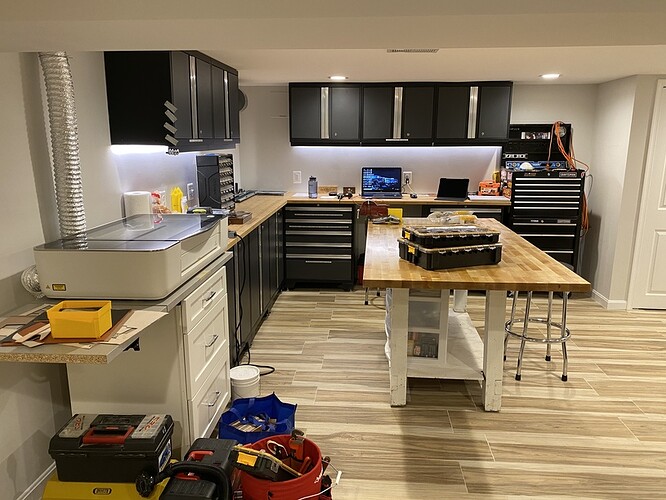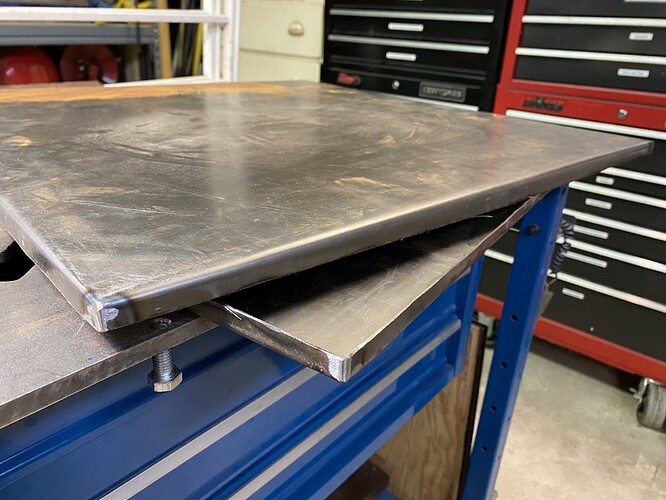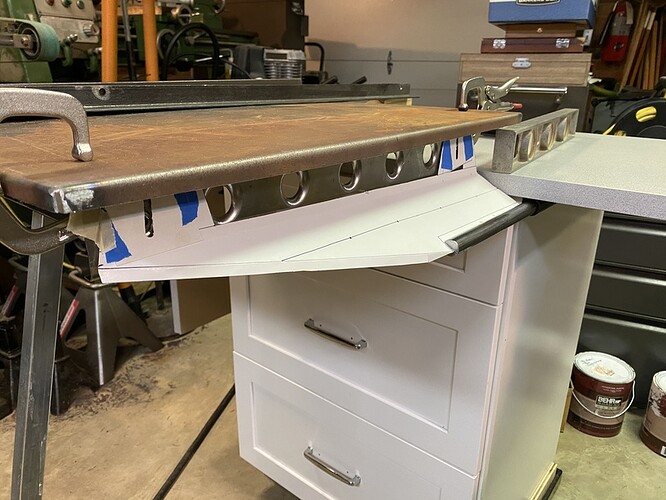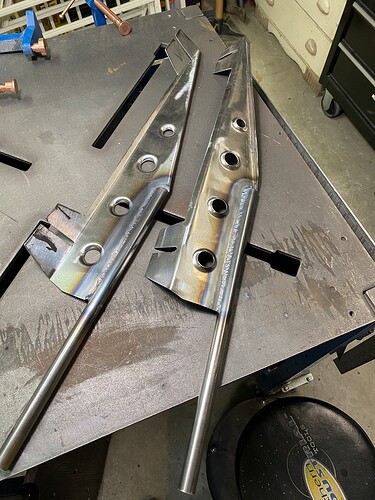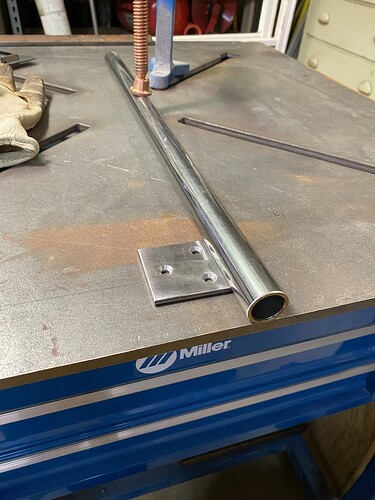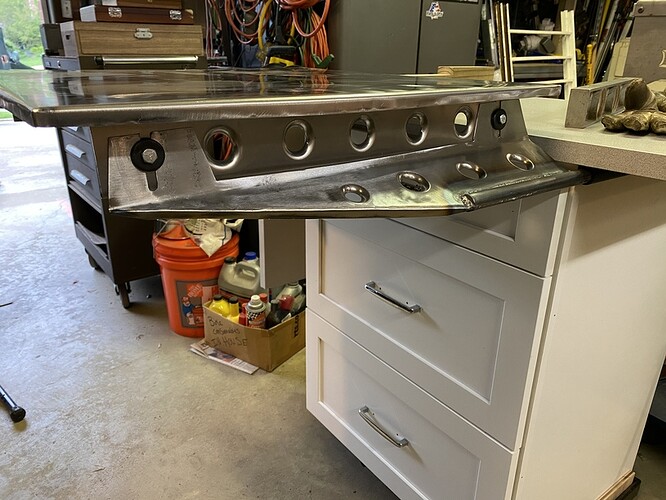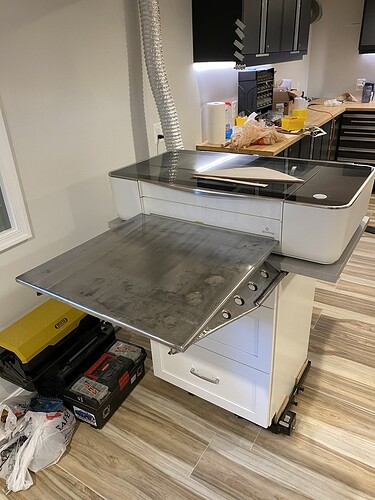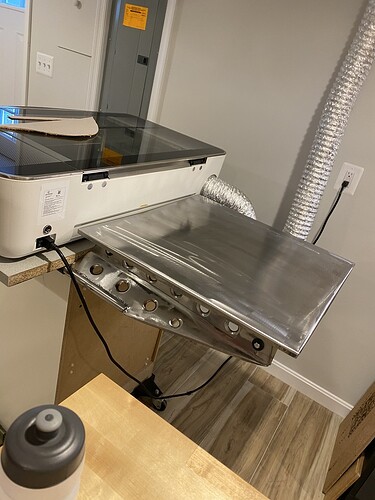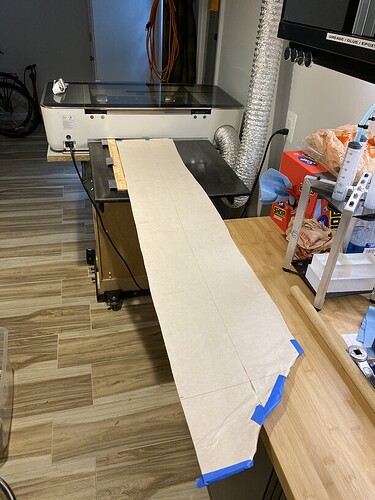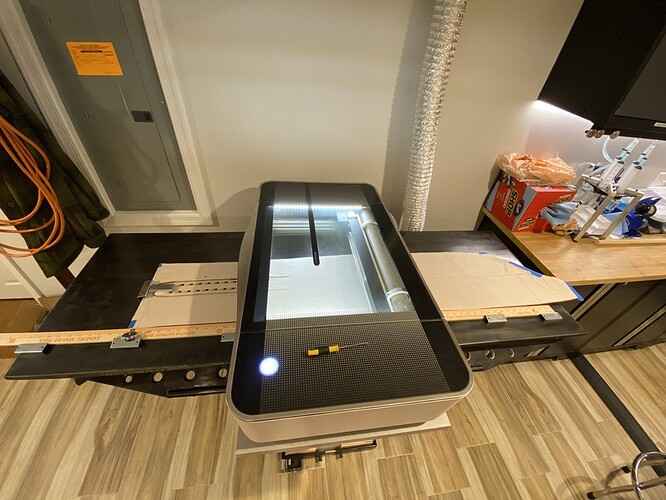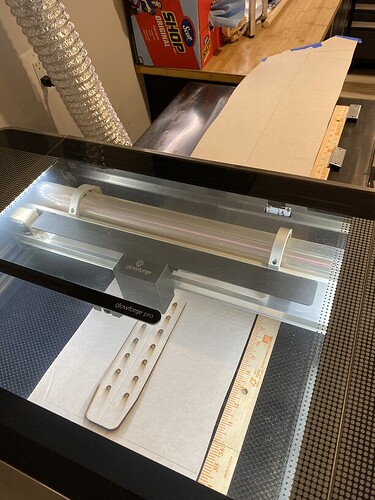On the suggestion of a friend I am posting some details about how I have fabricated some feed tables for my GF Pro for Pass Through jobs. I fabricated these about three years ago when building out my basement workshop. There are lots of discussions on tables (mine is a miss spec’ed cabinet from a bathroom reno and a drop cut countertop section from a family member) so the focus of this post are the removable feed tables.
The GF sits up against the wall for most jobs, but can be rolled out and rotated for the Pass Though Jobs. The features (round tubing shown/discussed below) that the tables engage with are mounted discreetly under the countertop.
The tables are fabricated from 18 ga steel sheet, some 1/2” diameter bar stock and tubing with 1/2” inner diameter.
Each table was formed from a 24”x24” blank and after forming the flange has 23”x23” top (1/2” flanges)
The tables have slots that allow for leveling them relative to the GF. Once leveled the fasteners are tightened and the tables can be removed and installed in seconds.
I made the tables out of steel for a couple reasons, the stiffness to weight from formed sheet metal exceeded plywood and flatness (which plywood would win out on) was not as important as the tables just need to support materials relative to the laser. Additionally, I wanted to have the tables slide into track mounted to the underside of the table so I would need metal somewhere to handle the cantilever loads.
Finally, steel allows for magnets to be used so that I can keep materials square to the laser (critical on pass through jobs). I have imbedded magnets into some yard sticks for this purpose. An added benefit is I can track precisely how far I have indexed the work piece between pass through runs.
The photos show a piece of 12oz leather for a “World Champion” belt as illustration of the tables in use.
The tables were coated with a chemical black (also called cold bluing) to inhibit rust.
In over a dozen pass through jobs the tables have worked flawlessly. My only critique would be when welding the tables together I didn’t control heat warping of the sheet metal as well as I could have and have a slightly bow. This does not affect function, but I could have done better.
Hope this provides some useful information for the community.
